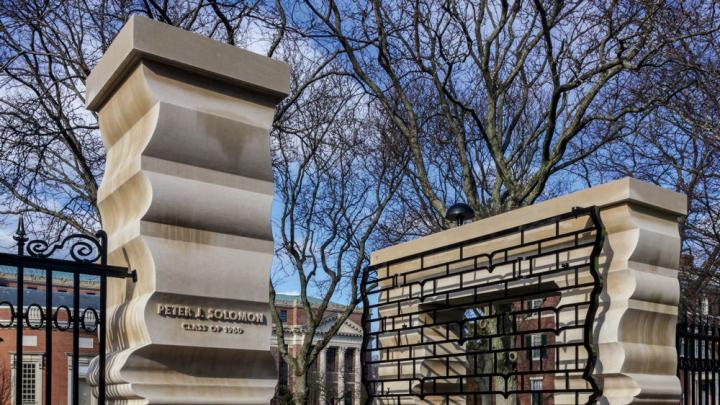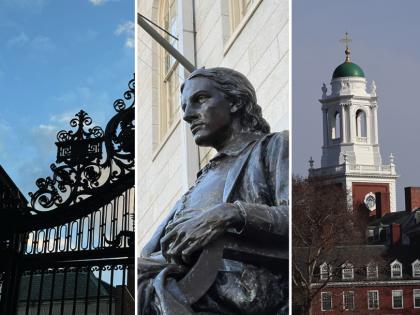By Harvard standards, the gate outside Lamont Library wasn’t really a gate. “It was just an extension of the fencing,” says Nazneen Cooper, the Faculty of Arts and Sciences’ assistant dean of campus design and planning. Unlike the Yard’s other notable gates, this one lacked any distinguishing features or artistic flourishes—it was an entrance, nothing more.
To Peter J. Solomon ’60, M.B.A. ’63, the lackluster entrance was an opportunity. After funding a renovation of Houghton Library and donating a large collection of children’s literature to its holdings (the renovation opens this fall; for background, see “A Sense of Belonging,” May-June 2019, page 18), he looked next at the Quincy Street gateway leading to both Lamont and Houghton libraries—clearly, he thought, not up to par. “I said to Harvard, ‘Why don’t you re-do that gate?’” he recalls. The new project, with his support, began.
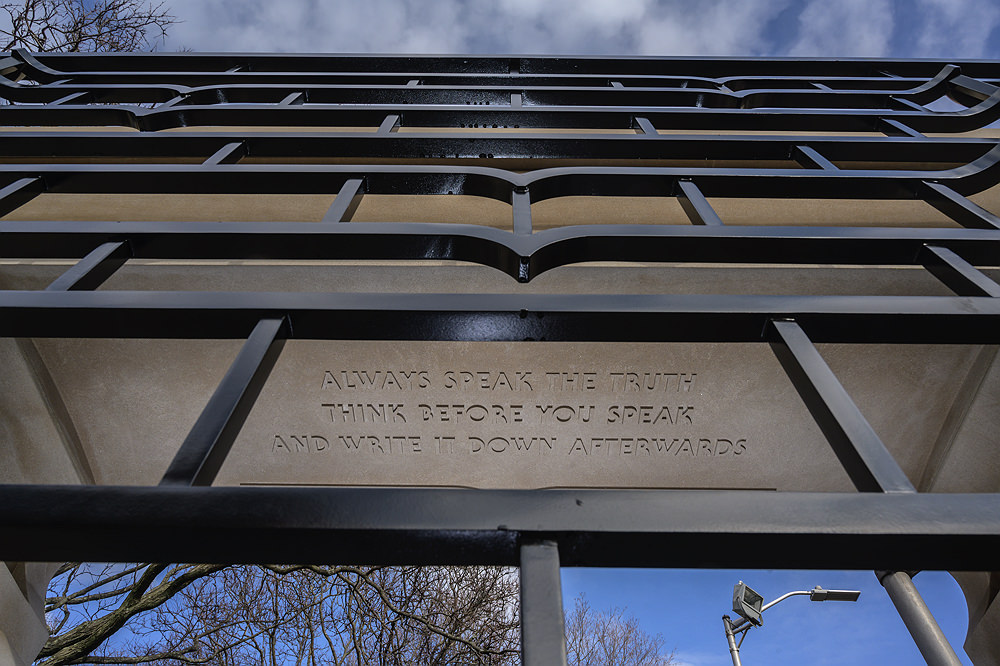
Inscribed above the gate, a quote from Lewis Carroll's Through the Looking-Glass.
Photograph by Jim Harrison.
Solomon wanted a gate that wasn’t too serious: less grandiosity, more curiosity. “I’m an investment banker,” he says. “I spend a lot of time in philanthropy, a lot of time in politics, and most people take themselves too seriously.” Maybe, he thought, the designers could use some imagery from the selections he’d donated, including first editions of Lewis Carroll’s Alice’s Adventures in Wonderland and Beatrix Potter’s Peter Rabbit.
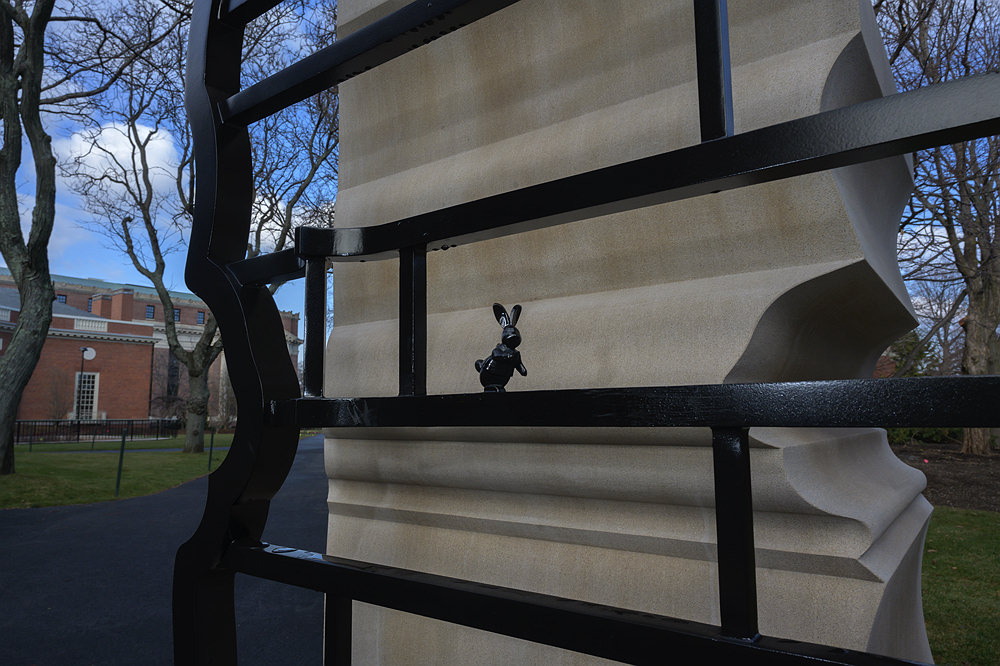
The White Rabbit, from Alice's Adventures in Wonderland.
Photograph by Jim Harrison.
Eric Höweler, associate professor of architecture and co-founding principal of Höweler + Yoon Architecture, looked to Solomon’s collection for inspiration as he began working on the design. He thought it would be fun to embed an abstract profile of Peter Rabbit into the entryway’s limestone columns. “Maybe,” he recalls thinking, “Peter Solomon would identify with Peter Rabbit.”

In a pandemic-less year, the gate will rarely be closed.
Photograph by Jim Harrison.
That isn’t the only whimsical feature. Scattered throughout the new gate’s ironwork are playful castings of storybook images, each piece looking like a toy left behind: the Mad Hatter’s topper, the Cheshire Cat, the Red Queen’s crown. The little hidden clues, Höweler hopes, will draw people in—and away from the distractions that otherwise occupy them. “We have a kind of at-a-glance culture,” he explains, “so the double-take was something that we really wanted to encourage.”
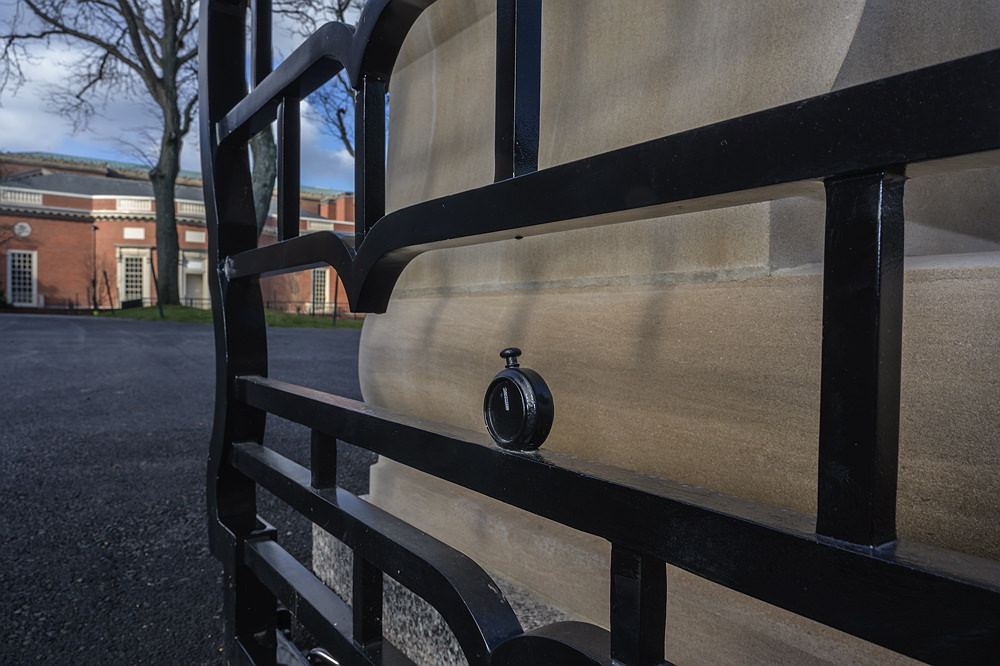
The White Rabbit's watch.
Photograph by Jim Harrison.
Höweler typically works on more modern designs but aimed to balance his design’s contemporary architecture with the classic look of Harvard’s existing gates. By studying their proportions and sticking with their typical palette (limestone, iron, granite), he hoped that the sleeker gate wouldn’t stick out like a sore thumb in 20 to 50 years. “A lot of people,” he says, “would be unhappy if the new gate didn’t reference or dialogue with its context.”
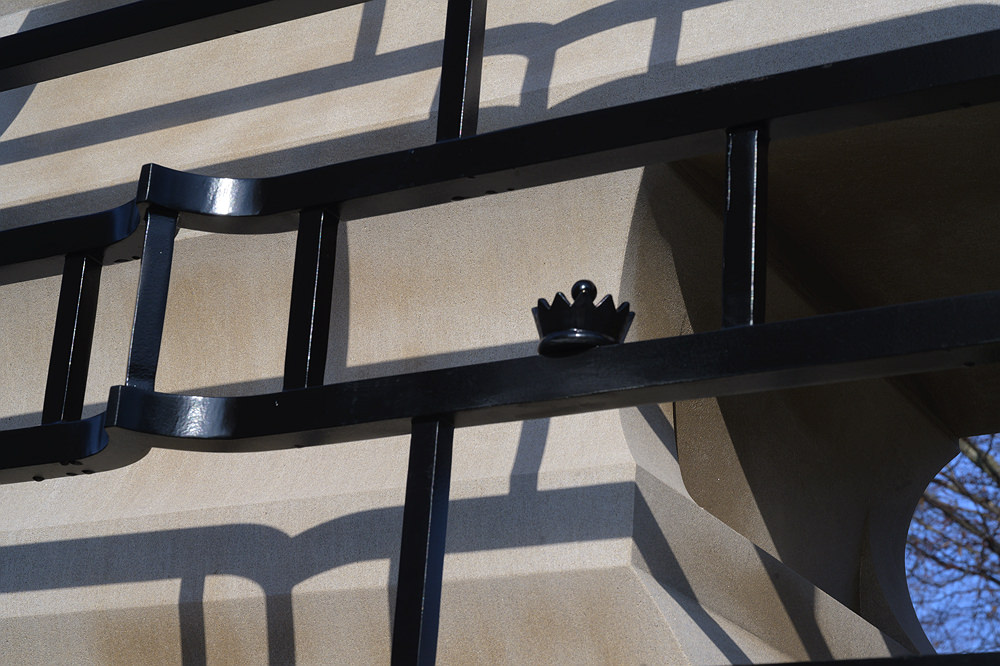
The Red Queen's crown, cast in iron.
Photograph by Jim Harrison.
On one level, Solomon hopes the gate will draw people into Houghton. But he also hopes it will convey a message to those who walk through it and take pleasure in its quirks. “You sort of have to understand that life is not totally rational,” he says—a challenging idea for some Harvardians. “There is a lot of nonsense….It helps if you can keep in mind your own place in the universe without being too pompous.” If his gift makes people stop for a minute and smile, he concludes, “That’s a great reaction.”
